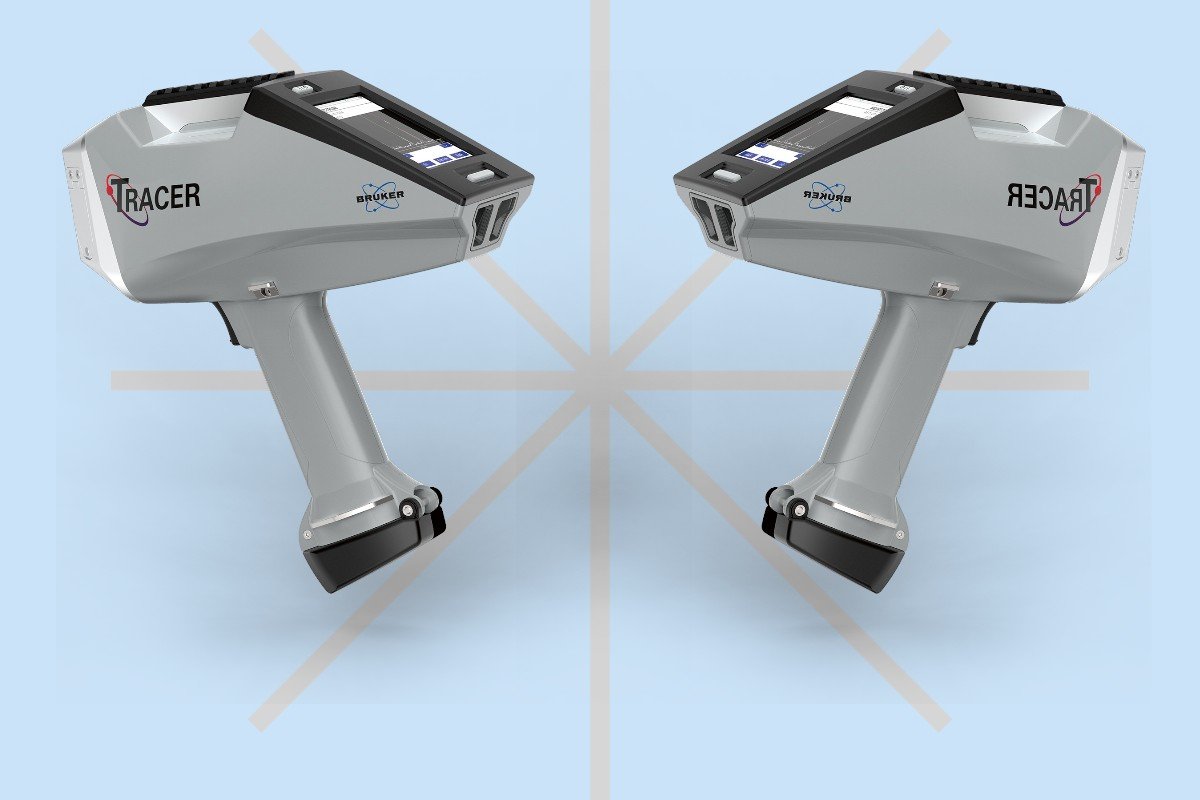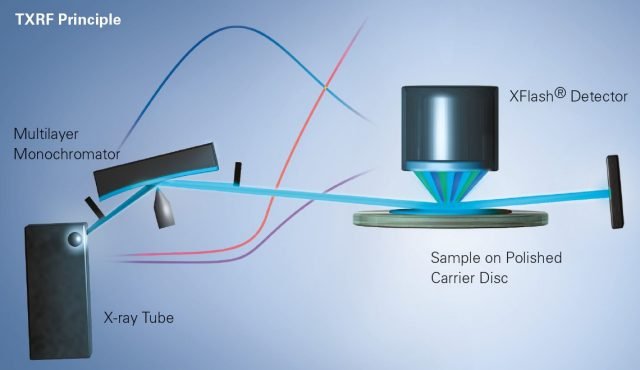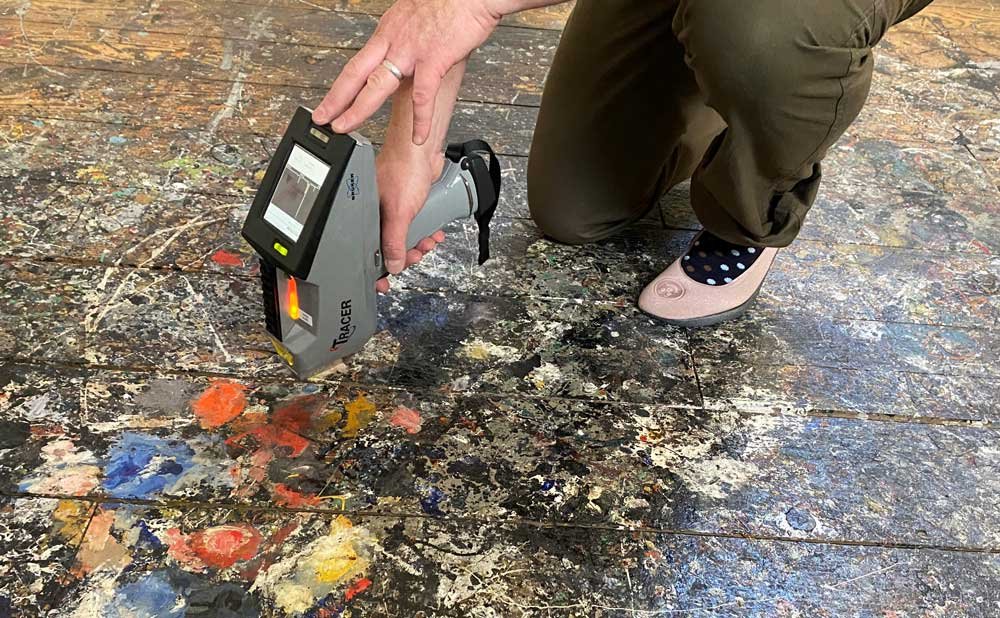
Why Choose the Bruker TRACER 5 XRF Spectrometer?
Introduction
In an era where precision and efficiency are paramount, analytical tools must keep pace with the demands of various industries. The Bruker TRACER 5 XRF Spectrometer emerges as a leader in elemental analysis, offering a unique blend of portability, advanced technology, and user-friendly features. This article explores the compelling reasons to choose the Bruker TRACER 5, detailing its specifications, advantages, applications, and overall impact on industries ranging from geology to manufacturing.
Understanding XRF Technology
What is XRF?
X-ray fluorescence (XRF) is a powerful, non-destructive analytical technique used to determine the elemental composition of materials. When a sample is irradiated with X-rays, it emits secondary X-rays characteristic of the elements present. This process allows for the identification and quantification of elements in a wide range of materials, including solids, liquids, and powders.

How Does the Bruker TRACER 5 Work?
The Bruker TRACER 5 utilizes a miniaturized X-ray tube and a silicon drift detector (SDD) to achieve high sensitivity and resolution. The device emits X-rays that interact with the sample, causing it to emit secondary X-rays. These secondary X-rays are then detected and analyzed to determine the elemental composition. The TRACER 5 is designed for both qualitative and quantitative analysis, making it versatile for various applications.
Key Features of the Bruker TRACER 5
1. Portability
One of the standout features of the Bruker TRACER 5 is its portability. Weighing significantly less than traditional XRF spectrometers, the TRACER 5 allows users to conduct analyses in the field without the constraints of a laboratory environment.
- Compact Design: The lightweight and compact design makes it easy to transport, enabling users to take it to remote locations for on-site analysis. This is particularly beneficial for geologists and environmental scientists who often work in rugged terrains.
- Battery Operation: The TRACER 5 can be powered by rechargeable batteries, further enhancing its portability and usability in the field. This feature ensures that users can operate the device without needing a constant power supply.
2. User-Friendly Interface
The TRACER 5 is designed with the user in mind, featuring an intuitive touchscreen interface that simplifies operation.
- Touchscreen Display: The large, high-resolution touchscreen provides a clear view of the data and results, making it easy to navigate through different functions. Users can easily switch between different analysis modes with just a few taps.
- Pre-Configured Settings: Users can select from pre-configured methods tailored for specific materials, reducing setup time and ensuring accurate results. This feature is especially useful for users who may not have extensive experience with XRF technology.
3. Rapid Analysis
In many industries, time is of the essence. The Bruker TRACER 5 excels in providing fast analysis without compromising accuracy.
- Quick Measurement Times: The device can deliver results in as little as one to two minutes, allowing users to make informed decisions quickly. This rapid turnaround is crucial in fast-paced environments like manufacturing and environmental monitoring.
- Real-Time Data Display: Users can view results in real-time, enabling immediate adjustments to sampling strategies if necessary. This capability allows for dynamic decision-making based on the latest data.
4. Wide Elemental Range
The Bruker TRACER 5 is capable of detecting a broad spectrum of elements, making it suitable for various applications.
- Elemental Detection: It can analyze elements from sodium (Na) to uranium (U), covering a wide range of applications in geology, environmental science, and materials analysis. This versatility means that users can rely on a single device for multiple types of analyses.
- Trace Element Sensitivity: The TRACER 5 is particularly effective at detecting trace elements, which are critical for environmental assessments and quality control in manufacturing. For example, detecting lead in soil samples is essential for environmental safety.
5. Advanced Technology
The Bruker TRACER 5 incorporates advanced technological features that enhance its performance and reliability.
- Silicon Drift Detector (SDD): The SDD technology provides superior energy resolution and sensitivity, allowing for the detection of low concentrations of elements. This feature is particularly beneficial in applications where trace analysis is critical.
- Calibration and Software: The device comes with sophisticated software that supports various calibration methods, ensuring accurate quantification of elements based on user-defined parameters. Users can customize calibration settings to match specific sample types.
Applications of the Bruker TRACER 5
The versatility of the Bruker TRACER 5 makes it applicable across multiple industries. Here are some key areas where the TRACER 5 is commonly used:
1. Geological Surveys
In the field of geology, the TRACER 5 is invaluable for mineral exploration and soil analysis.
- Mineral Identification: Geologists can use the TRACER 5 to quickly identify the mineral content of rock samples, aiding in resource exploration. For instance, identifying valuable minerals like gold or copper in a rock sample can significantly impact mining operations.
- Soil Testing: The device can analyze soil samples for nutrient content and contaminants, providing essential data for agricultural and environmental studies. Farmers can use this information to optimize soil health and crop yields.

2. Environmental Testing
Environmental scientists rely on the TRACER 5 for assessing contamination levels in various media.
- Water Quality Analysis: The TRACER 5 allows for the rapid analysis of water samples, identifying heavy metals and other contaminants that may pose risks to public health. This capability is crucial for ensuring safe drinking water and monitoring pollution levels in bodies of water.
- Soil Contamination Assessment: The ability to detect trace elements makes the TRACER 5 an essential tool for evaluating soil contamination from industrial activities. For example, it can identify the presence of hazardous substances like arsenic or cadmium in soil.
3. Manufacturing Quality Control
In manufacturing, maintaining product quality is crucial. The TRACER 5 helps ensure materials meet industry standards.
- Material Composition Analysis: Manufacturers can use the TRACER 5 to verify the elemental composition of raw materials, ensuring compliance with specifications. This is particularly important in industries like electronics, where material purity is critical.
- Final Product Testing: The device can be used to conduct quality control checks on finished products, identifying any deviations from required standards. For example, in the production of alloys, ensuring the correct elemental composition is vital for product performance.
4. Cultural Heritage Studies
The TRACER 5 plays a significant role in the analysis and preservation of cultural artifacts.
- Artifact Analysis: Conservators can analyze the elemental composition of artifacts to determine their origin and authenticity. This analysis can provide insights into historical trade routes and cultural exchanges.
- Restoration Efforts: The device aids in assessing the condition of artworks and historical objects, guiding restoration efforts. For example, determining the presence of harmful elements can inform conservation strategies.
5. Academic Research
Researchers in various fields utilize the TRACER 5 for its analytical capabilities.
- Material Science: The device is used in research to study the properties of new materials and their elemental compositions. For instance, researchers can analyze nanomaterials for applications in electronics and medicine.
- Environmental Science: Academics can conduct studies on pollution and environmental degradation using the TRACER 5 for fieldwork and laboratory analysis. This research is critical for developing strategies to mitigate environmental impacts.
Benefits of Using the Bruker TRACER 5
1. Cost-Effectiveness
Investing in the Bruker TRACER 5 can lead to significant cost savings over time.
- Reduced Laboratory Costs: The ability to conduct on-site analysis reduces the need for transporting samples to laboratories, saving time and money. This is particularly advantageous for companies that require frequent testing.
- Minimized Sample Preparation: The non-destructive nature of XRF analysis means that samples can be analyzed without extensive preparation, further reducing costs. This efficiency allows for more samples to be analyzed in less time.
2. Enhanced Decision-Making
The speed and accuracy of the TRACER 5 empower users to make informed decisions quickly.
- Timely Results: Rapid analysis allows for immediate decision-making, which is critical in fields like environmental monitoring and manufacturing. For instance, if contamination is detected, immediate action can be taken to mitigate risks.
- Data-Driven Insights: The comprehensive data provided by the TRACER 5 supports better decision-making processes across various applications. Users can rely on accurate data to guide their strategies and operations.
3. Versatility and Adaptability
The Bruker TRACER 5 is designed to adapt to a wide range of applications and user needs.
- Customizable Methods: Users can create and save custom analysis methods tailored to specific materials and requirements. This flexibility allows for a more personalized approach to analysis.
- Multi-Industry Use: Its versatility makes it suitable for professionals in geology, environmental science, manufacturing, and cultural heritage. This broad applicability means that one device can serve multiple roles within an organization.
4. Reliable Performance
Bruker is known for its commitment to quality, and the TRACER 5 is no exception.
- Durability: Built to withstand the rigors of fieldwork, the TRACER 5 is a reliable tool for long-term use. Its robust design ensures that it can handle challenging environments without compromising performance.
- Consistent Results: Users can trust the accuracy and reliability of the results obtained from the TRACER 5, ensuring confidence in their analyses. This reliability is crucial for industries where compliance and safety are paramount.
Case Studies
Case Study 1: Geological Exploration
In a recent geological exploration project, a team of geologists utilized the Bruker TRACER 5 to analyze rock samples from a remote mining site. The portability of the device allowed them to conduct on-site analyses, significantly reducing the time and cost associated with sample transportation. Within minutes, they identified key mineral deposits, including copper and gold, leading to a successful mining operation.
Case Study 2: Environmental Monitoring
An environmental consulting firm employed the TRACER 5 to assess soil contamination levels in an industrial area. By quickly analyzing soil samples for heavy metals, they were able to provide immediate feedback to their clients, enabling them to take corrective actions to mitigate environmental risks. The rapid results not only saved time but also helped the firm maintain its reputation for reliability.
Case Study 3: Cultural Heritage Conservation
In a project aimed at preserving historical artifacts, conservators used the Bruker TRACER 5 to analyze the elemental composition of ancient pottery. The insights gained from the analysis informed restoration efforts and helped in authenticating the artifacts. The non-destructive nature of the analysis ensured that the integrity of the artifacts was preserved throughout the process.
Conclusion
The Bruker TRACER 5 XRF Spectrometer represents a significant advancement in elemental analysis technology. Its combination of portability, user-friendly design, rapid analysis capabilities, wide elemental range, and advanced technology makes it an essential tool for professionals across various industries. Whether in geological surveys, environmental testing, manufacturing quality control, cultural heritage studies, or academic research, the TRACER 5 provides reliable and accurate results that enhance decision-making and drive efficiency.
As industries continue to evolve and demand more from analytical tools, the Bruker TRACER 5 stands out as a versatile and powerful solution for modern analytical challenges. With its proven performance and adaptability, choosing the Bruker TRACER 5 XRF Spectrometer is a decision that can lead to improved outcomes and greater success in your analytical endeavors.
